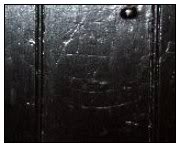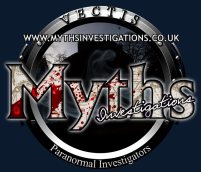St Catherines
The entire area seems very peaceful and picturesque, although you do get a strange sensation run through your body – perhaps its because of the grand majesty of the lighthouse… or is it.. the feel of hundreds of years of history that have taken place here ?…
The first thing to do when visiting, is to discount the lighthouse. Look beyond the lighthouse to the nearby cottages, they have been part of the landscape well before the lighthouse was even thought about.
Throughout time these tiny cottages have served many uses, and are still being lived in as family homes even today. During the second world war, defence (lookout) bunkers where placed all along the coast. The cottages where assconed into a makeshift communications HQ. Even today, upon lifting the floorboards of the cottages, you can find large tangles of wire that once connected lookout huts stationed around the coast to the cottages.
Fact: Marko Marconi – the inventor of wireless radio – actually lived in one of the cottages, it was from here that the first radio device was invented. A small stone plaque was inserted into the building in his honour.
Did you know that the St Catherines lighthouse keeper was the last living person to actually see the Titanic sail away ?, quite a sobering thought !
The lighthouse itself was built in 1838, and still looks good today. Although a lighthouse keeper still lives in the base house, the light was fully automated in 1997.
Smuggling was rife in this area, infact it was part of the main income for a lot of the locals around the area. Customs men would hide in wait, hoping to catch them in the act. But more often than not, the smugglers would hide their wares in a safe place till it was safe. The cottages themselves have quite a few little hidey-holes !.
Creepy goings-on in the Cottages and Lighthouse…
Originally the whole area was part of an estate owned by the Prendergast family. They would rent out plots of land to the local farmers. The farmers would cobble together their own unique farm houses, out of just about anything they could find.. mostly using wood from the shipwrecks around the bay..
The coast around that corner of the island is razor sharp, and could cut a ship into tiny pieces in a matter of hours.
It was quite a regular occurrence for a ship to become in distress, infact sometimes it was the local smugglers themselves – who would light fake signals in order to bring the ship closer to the ledges and the gangs of smugglers hidden on the seashore. As you can imagine, this was at a time when the UK coastline was pretty alien to cargo ships from overseas. Many tricks that the smugglers have used, have been documented by customs men in their logs.
In 1377 the French invaded the island, Bloody battles where fought in the surrounding fields. As the bay was considered so remote, it was an ideal for a landing party, or so they thought…. Unfortunately for them they didn’t count on the brave men of the Niton militia, who where lying in wait for the advancing army high above. They managed to stop them in their destructive tracks before they could go any further, and ‘dig-in’ at the nearby town of Niton.
Human bones have been found around the battlefields, as well as old relics – which can still be viewed in some of the local museums.
 One of the cottages even has carved drawings of the ships that sunk engraved on a doorway. Look carefully at the picture to the left, you can just about make out the tall sail ship!
One of the cottages even has carved drawings of the ships that sunk engraved on a doorway. Look carefully at the picture to the left, you can just about make out the tall sail ship!
If you ever get to go into the loft of one of these old cottages, don’t be surprised to find carvings on the beams made by the sailors of the ill fated ships. Most of the timber used in the construction of the houses was from reclaimed wood taken from the wrecks. (A cheap way of extending your house!)
Recently work was undertaken at one of the cottages, builders found what can only be described as an old witches tool – a poppet – embedded within the stone fireplace. The owners decided that it was best if the item remained just as it was found, so was quickly put back in its resting place!
Last year the team went out to the cottages to experience for ourselves the paranormal activity.
Strangely enough, it wasn’t long after the lighthouse was built it had to be lowered by 34 feet, due to a problem with persistent low fog !. Some of the actual rounded brickwork is used in the construction of the cottages – as you shall see..





Leave a Reply
You must be logged in to post a comment.